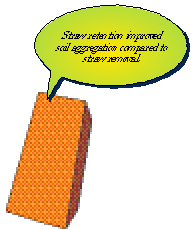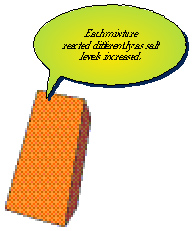
Features
Agronomy
Tillage
Pea-wheat rotations look sustainable in the Brown soil zone
Replacing summerfallow with a pea crop can be more profitable than traditional rotations.
March 5, 2008 By Reduced Tillage Linkages
On the semi-arid prairie in the Brown soil zone, wheat-fallow has been the traditional
rotation for more than 100 years. But as soil fertility during those years, and nitrogen (N) fertilization becomes necessary to maintain wheat yield on summerfallow, more farmers are looking at replacing summerfallow with a pulse crop. Indeed, some farmers are working with researchers to help determine if a pea-wheat rotation is sustainable.
 |
| SARA field crew harvesting plots. Photo Courtesy Of Ken Coles, SARA. |
Richard Fritzler farms near Etzikom, Alberta, and has had peas in his rotation for more than 10 years after seeing the success of long-term plot trials established at Bow Island by Ross McKenzie of Alberta Agriculture and Food (presently on leave at the Lethbridge College teaching Agronomy) in 1992. Fritzler says that farmers who are new to peas need to have some patience before they see results. “The first time you seed peas, you won’t see the results overnight. You really start to see the benefits around the third rotation,” says Fritzler.
Fritzler, like other pulse pioneers in the Brown soil zone, was drawn to peas as a summerfallow replacement for several reasons. As a shallow rooted crop, peas leave a portion of soil moisture reserve for the following crop in most years. While peas root down approximately 30 inches, the subsequent wheat crop can root deeper, taking advantage of the carryover soil moisture.
Peas also are harvested in early to mid August, which allows more opportunity for late summer and fall rainfall to recharge soil moisture. Peas are also one of the most efficient users of water, which helps them produce a crop on cereal stubble.
Since peas fix their own nitrogen when properly inoculated, N fertilizer savings can be substantial. At current prices of $0.50 per pound, peas can fix from $24 to $74 per acre of nitrogen, with some of this left for the following crop.
 |
| Nitrogen fixation improves sustainability. Photo Courtesy Of Rick Taillieu, RTL. |
“With more producers in the Brown soil zone using no-till, we’ve seen different rotations tried out, and many have settled on a pea-wheat. Some have tried a wheat-pulse-oilseed rotation, but the moisture requirement for the rotation seems to be too high to be sustainable,” explains Don Wentz, an agronomist with Alberta Reduced Tillage Linkages. “Still, many producers have stuck with a traditional rotation, but research by Ross McKenzie, and demonstrations conducted by the Southern Alberta Research Association are showing that a pea-wheat rotation in no-till can be sustainable.”
The Southern Alberta Research Association (SARA) began on-farm trials with the pea-wheat rotation to extend the results from the AAF research trials in order to help farmers see the benefits of the rotation and to encourage its adoption.
Small plot research shows economic benefit
In 1992, the Long-Term Dryland Crop Rotation Study in the Brown Soil Zone study began at the AAF’s Alberta Crop Diversification Centre South’s Bow Island substation. This long-term study was aimed at determining the viability of existing and alternative crops and cropping systems under differing rates of inorganic fertilizers and manure. McKenzie initiated the study and the rotations evaluated include continuous wheat, wheat-fallow, wheat-wheat-fallow, pea-wheat, flax-wheat-fallow and grass.
In 2002, a farm-level economic risk model was developed for the study to determine the ‘best’ rotation and fertilizer combinations for a given set of risk-tolerance levels. Professor Allan Walburger with the Department of Economics at the University of Lethbridge conducted this analysis with McKenzie.
All-risk crop insurance (which covers yield loss due to drought, hail, frost and other environmental factors) was included in the analysis for all crops except hay. Crop insurance was set at the 70 percent individual coverage level, and premiums were set at year 2000 levels.
| Table 1. Farm-level optimal rotations and economic performance under risk aversion (with legume crop, 1996 to 2000). | ||||
| Levels of risk aversion (percentage) | ||||
| Optimal rotations |
Low |
Medium |
High |
Very high |
| Wheat-fallow (36, 18) | Zero | Zero | 25 | 62 |
| Legume-wheat (18, 18) | 100 | 100 | 75 | 38 |
| Expected net returns ($/ac) | $36.59 | $36.59 | $32.74 | $26.77 |
| St. deviation of net returns ($/ac) | $43.82 | $43.82 | $37.80 | $30.55 |
| Source: Long-Term Dryland Crop Rotation Study in the Brown Soil Zone, AAF. | ||||
The highest expected returns, in terms of net rotational income, came from the pea-wheat rotation. However, this rotation also showed high variability in returns, indicating greater risk. The report written by McKenzie and Walburger says, “The increased variability is a result of relatively higher input costs and returns as compared to the other rotations.”
When crop insurance was not included in the analysis, the highest rotational income also came from the pea-wheat rotations. Fallow-wheat-wheat rotation with fertilizer treatments of 36 pounds per acre of N and 18 pounds per acres of P2O5 was the next best rotation.
The analysis also evaluated how producers might combine the rotations to maximize their average annual returns and reduce their exposure to risk (or variability in returns from year-to-year). For example, would a pea-wheat rotation grown on 30 percent of the acreage and fallow-wheat-wheat on the remaining acreage be more profitable and less risky?
The researchers found that as long as pea prices remain at least 70 percent of their average price for the period, the pea-wheat without any fertilizer was the best net rotational income in the study. However even at this level, the results indicated that risk-averse producers would mix a combination of pea-wheat and fallow-wheat. The relative rates would depend on each producer’s degree of risk-aversion and level of crop insurance. With this combination of rotations, producer expected net farm income could be expected to increase from $5 to $8 per acre.
The study is ongoing and in 2004 several rotations were discontinued and several new crop rotations were incorporated into the study. The flax-wheat-fallow rotation was replaced with mustard-wheat-fallow, and the wheat-wheat-fallow was replaced with a winter wheat-lentil rotation. The site was managed as minimum tillage from 1992 to 2003 and now is direct seeded.
Farmer trials see similar trends
Subsequent to the small plot trials, SARA set up a five year trial at four farmer sites throughout southern Alberta, with two sites located in AFSC Risk Area 2 (Cardston, Lethbridge, Vulcan), one site located in Risk Area 3 (Taber and Foremost), and one located in Risk Area 4 (Hanna, Brooks, Medicine Hat). The trials compared a pea-wheat rotation to a wheat-fallow rotation. The sites were established in 2004, with the producers allocating fields of 80 to 160 acres for the five years of the study. Each field was split in two, with each phase of the rotation seeded on half of the field so each phase was present every year.
Seeding was done with direct seeding equipment, and included both narrow shank and disc-type openers. The Alberta Pulse Commission and AAF’s Agricultural Opportunities Fund funds the project.
Coles says the 2007 results have not been finalized, but the three year summary done in 2006 for the pea-wheat rotation found that the yield averaged 37.8 bushels per acre for peas and 32.7 bushels per acre for wheat during the three years. The yield of wheat increased by seven bushels per acre compared to the previous year, and peas increased by four bushels per acre. Compared with the long-term AFSC wheat yield average on fallow, these fields have produced an extra two bushels of wheat in addition to the 38 bushels per acre of peas from the otherwise fallow year.
Gross income on the sites averaged $118 per acre in the three years. Net income (measured cash input costs plus $35 per acre for machinery expenses) averaged $42.30 per acre. Compared to the income from a calculated fallow-wheat rotation using AFSC averages, the pea-wheat rotation gained $67.50 per acre in gross income and $42 per acre in net income more than the traditional rotation.
 |
| Ross McKenzie established the long-term rotational studies highlighting the benefits of pea-wheat rotations. Photo Courtesy Of Don Wentz, RTL. |
While pea-wheat rotations have not become commonplace in southern Alberta, Coles says more farmers are moving that way. “The guys doing it are really happy with it,” he says.
For his part, Fritzler has adopted a peas-cereal-fallow rotation to minimize some of the risk of continuous cropping. He does have one field that has been in a peas-cereal rotation for the past 10 years, though. “After the fourth rotation, both crops really do well. I’m seeing an advantage of seven to eight bushels of wheat per acre when it is grown on pea stubble as compared to chemfallow.”
Another longer-term benefit that Fritzler has noticed with the pea-wheat rotation is that wheat protein content is going up, due to increasing soil fertility and the release of N from pea organic matter later in the season. A key management practice for Fritzler has been to seed very early. The earliest he has seeded was the first week of April and he likes to make sure the crop is in by mid April.
Coles says that another SARA project is working with winter pulses, which McKenzie and Rob Dunn with AAF have worked with in the past. “If successful, winter pulses might expand the opportunities for a pulse-wheat rotation in the dry Brown soil zone, such as growing a winter wheat-winter pea rotation,” explains Coles.
Wentz says that Fritzler’s experience mirrors the experience of other pea growers in southern Alberta. Through the use of direct seeding, the farmers have been able to diversify their
rotation, while improving the long-term sustainability of their soil.
“In this area, direct seeding has allowed farmers to try pulses in their rotation. We haven’t seen a huge change in practices yet, but the research, demonstrations and farmer experiences are showing that pulses can work in dryland areas,” says Wentz.
McKenzie notes that without conducting this long-term crop rotation study farmers in southern Alberta would likely never have taken the risk to adopt this very sustainable crop rotation. “When this rotation was started in 1992, no farmers were growing peas in the Brown soil zone on dryland in Alberta.” -end-